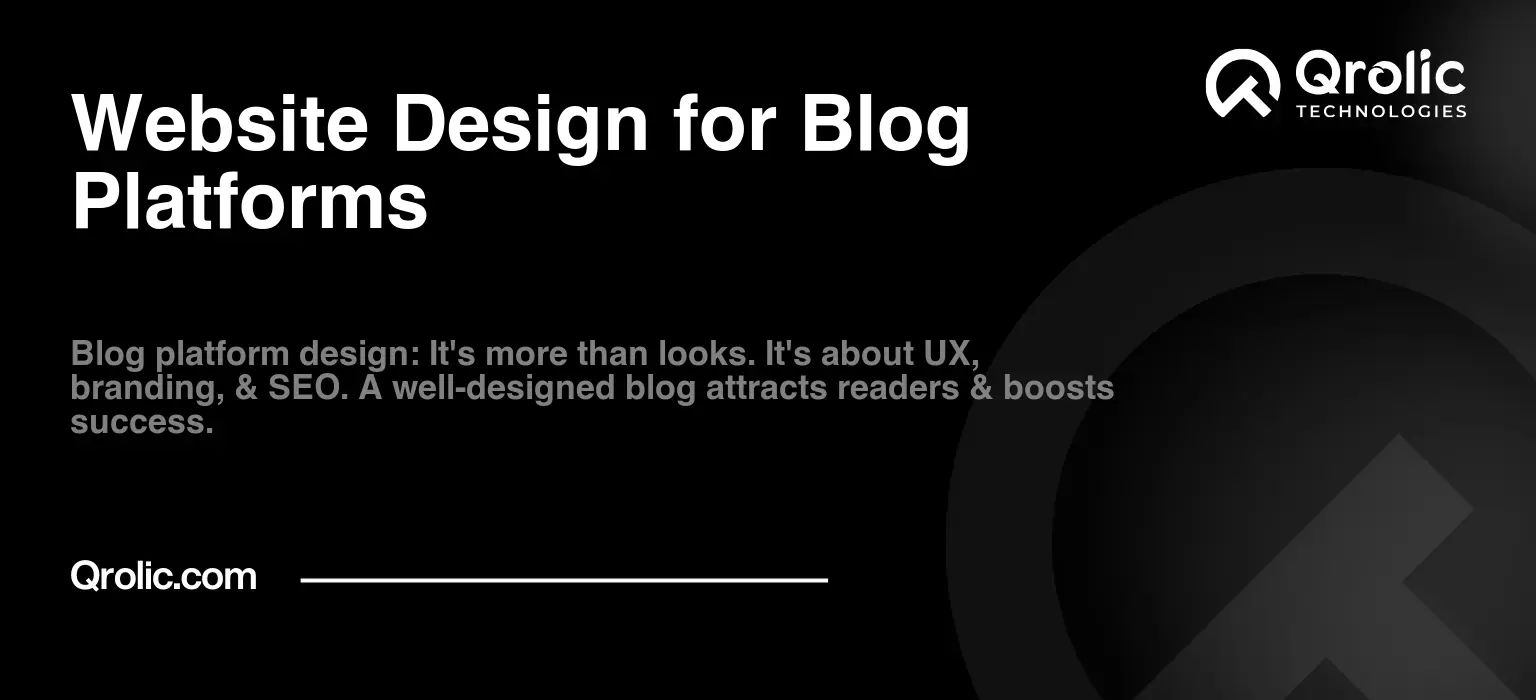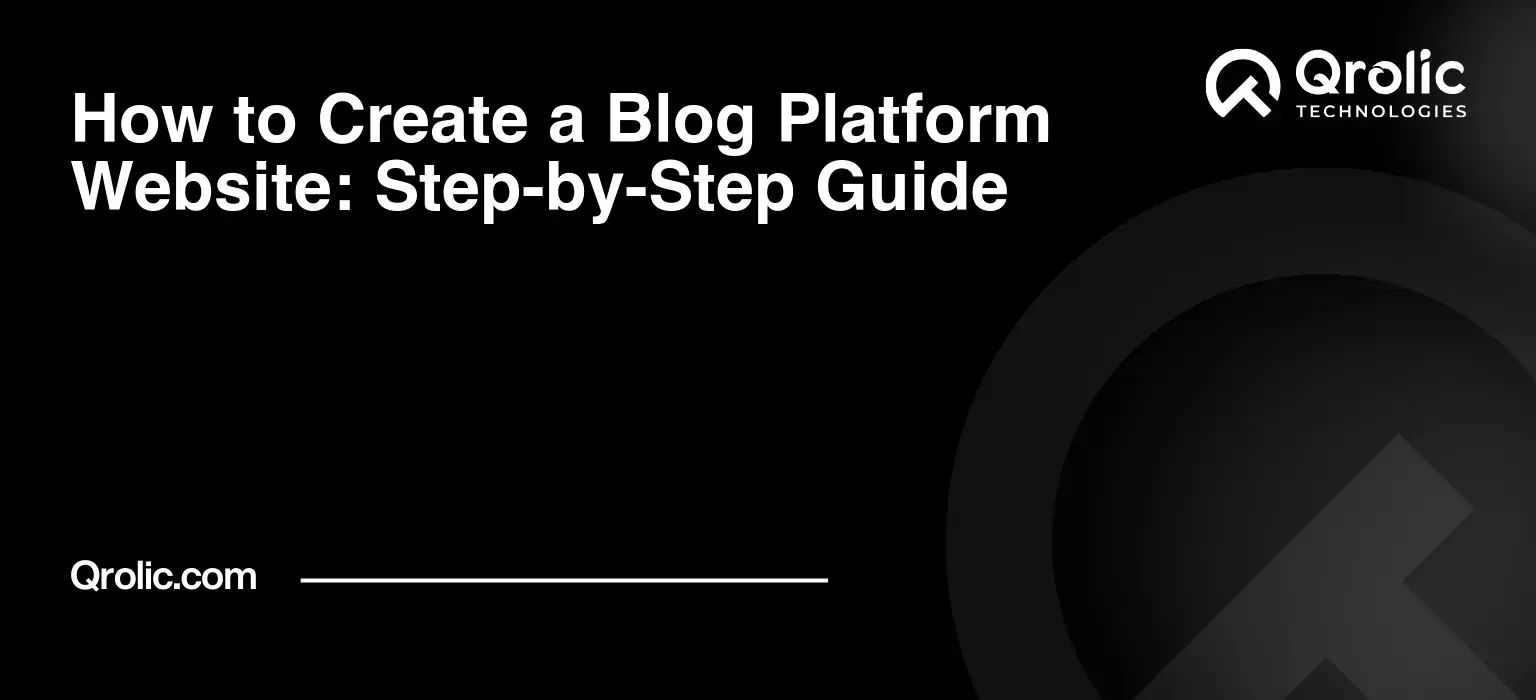Quick Summary:
- Good design is key to attract and keep readers.
- Focus on visuals, easy navigation, and helpful features.
- Choose the right platform and optimize for search engines.
- Avoid slow loading and hard-to-use mobile designs.
Table of Contents
- The Soul of Your Blog: Why Website Design Matters
- What is a Blog Platform Website Design?
- Why Invest in Exceptional Blog Platform Website Design?
- Key Elements of Effective Blog Platform Website Design
- Visual Appeal: Colors, Typography, and Imagery
- User Experience (UX): Navigation, Readability, and Accessibility
- Functionality: Plugins, Widgets, and Social Integration
- Choosing the Right Blog Platform: A Crucial First Step
- The Design Process: From Concept to Launch
- SEO Optimization: Making Your Blog Discoverable
- On-Page SEO
- Off-Page SEO
- Technical SEO
- Common Mistakes to Avoid in Blog Platform Website Design
- Examples of Inspiring Blog Platform Website Designs
- The Future of Blog Platform Website Design
- Monetizing Your Blog Through Design
- Content Creator Web Development: Beyond the Blog
- Qrolic Technologies: Your Partner in Blog Platform Website Design
- Our Services Include:
- Why Choose Qrolic Technologies?
- Conclusion: The Power of a Well-Designed Blog Platform
The Soul of Your Blog: Why Website Design Matters
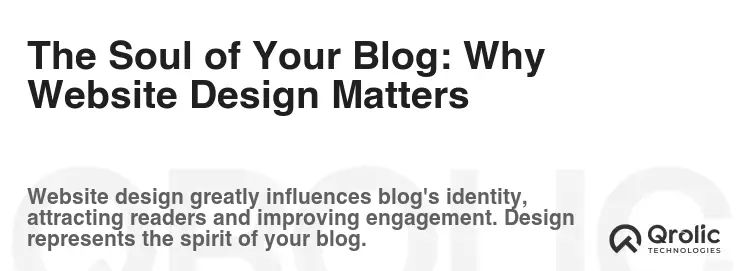
In the vast digital landscape, your blog is your voice, your brand, your corner of the internet. But even the most compelling words can get lost if the presentation is lackluster. Blog platform website design isn’t just about aesthetics; it’s about creating an experience. It’s about guiding your readers through your content, fostering engagement, and ultimately, building a loyal audience. Think of it as the storefront for your intellectual property – would you want a cluttered, uninviting shop window, or a beautifully curated space that draws people in?
What is a Blog Platform Website Design?
Blog platform website design encompasses the visual and functional elements that make up your blog’s online presence. It includes everything from the layout and color scheme to the navigation and user interface. A well-designed blog platform:
- Reflects Your Brand: It visually communicates your blog’s personality and values.
- Enhances User Experience: It makes it easy for visitors to find and consume your content.
- Supports Your Goals: It helps you achieve your objectives, whether it’s building an email list, selling products, or simply sharing your thoughts.
- Is Mobile-Friendly: It adapts seamlessly to different devices, ensuring a consistent experience across desktops, tablets, and smartphones.
- Is SEO Optimized: It is structured in a way that allows search engines like Google to easily crawl, index, and understand your content.
Why Invest in Exceptional Blog Platform Website Design?
Investing in excellent online publishing website design isn’t an expense, it’s an investment. Here’s why:
- First Impressions Matter: You have mere seconds to grab a visitor’s attention. A visually appealing and well-designed blog immediately establishes credibility and professionalism.
- Reduced Bounce Rate: A confusing or clunky website will send visitors packing. A clean, intuitive design keeps them engaged and exploring your content.
- Increased Time on Site: The longer visitors stay on your site, the more likely they are to become loyal readers or customers. Good design encourages them to delve deeper.
- Improved SEO: Search engines favor websites that offer a positive user experience. A well-designed blog is more likely to rank higher in search results.
- Enhanced Brand Recognition: A consistent design across your website and social media channels reinforces your brand identity and makes you more memorable.
- Higher Conversion Rates: Whether you’re selling products, promoting services, or building an email list, a well-designed blog can significantly increase your conversion rates.
- Competitive Edge: In a crowded online space, a professionally designed blog can set you apart from the competition and attract more attention.
Key Elements of Effective Blog Platform Website Design
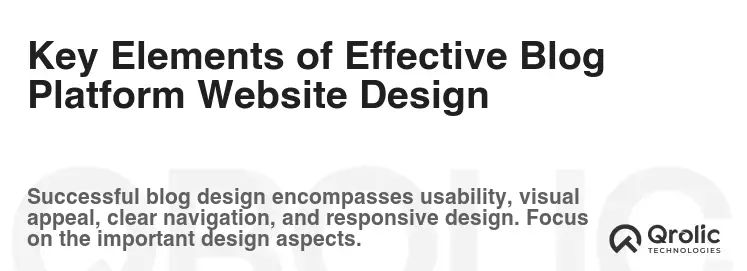
A truly captivating blog platform website design weaves together several crucial elements:
Visual Appeal: Colors, Typography, and Imagery
- Color Palette: Choose a color palette that reflects your brand personality and evokes the desired emotions. Consider the psychology of color – blues convey trust, reds convey excitement, greens convey nature, etc. Limit your palette to 2-3 primary colors and a few accent colors for a cohesive look.
- Typography: Select fonts that are both legible and visually appealing. Use different font pairings for headings and body text to create visual hierarchy. Ensure your font sizes are large enough for comfortable reading, especially on mobile devices.
- Imagery: High-quality images and graphics are essential for breaking up text and adding visual interest. Use relevant, eye-catching images that complement your content. Optimize your images for the web to reduce loading times. Consider using custom illustrations or graphics to further enhance your brand identity.
- Whitespace: Don’t underestimate the power of whitespace (also known as negative space). It creates breathing room and makes your content easier to read. Avoid cluttering your website with too many elements.
User Experience (UX): Navigation, Readability, and Accessibility
- Intuitive Navigation: Make it easy for visitors to find what they’re looking for. Use a clear and concise navigation menu with well-defined categories and subcategories. Implement a search bar for easy content discovery.
- Readability: Prioritize readability by using short paragraphs, bullet points, and headings to break up text. Use a clear and concise writing style. Ensure adequate contrast between text and background colors.
- Mobile-Friendliness: Ensure your website is responsive and adapts seamlessly to different screen sizes. Test your website on various devices to ensure a consistent user experience.
- Accessibility: Design your website to be accessible to users with disabilities. Use alternative text for images, provide captions for videos, and ensure your website is keyboard-navigable. Follow accessibility guidelines like WCAG (Web Content Accessibility Guidelines).
- Fast Loading Speed: Website speed is critical for user experience and SEO. Optimize your images, use caching, and choose a reliable hosting provider to ensure fast loading times.
Functionality: Plugins, Widgets, and Social Integration
- Essential Plugins: Choose plugins that enhance your blog’s functionality without sacrificing performance. Consider plugins for SEO, social sharing, contact forms, and security.
- Strategic Widgets: Use widgets to provide valuable information and encourage engagement. Consider widgets for displaying popular posts, recent comments, email signup forms, and social media feeds.
- Social Integration: Make it easy for visitors to share your content on social media. Use social sharing buttons and integrate your social media feeds into your website.
- Commenting System: Implement a commenting system to encourage interaction and build a community around your blog. Moderate comments to ensure a positive and respectful environment.
Choosing the Right Blog Platform: A Crucial First Step
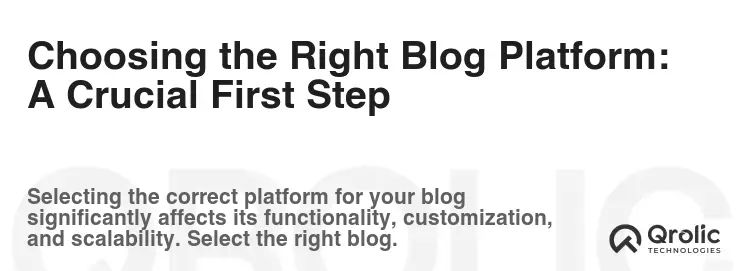
Before diving into design, you need to select the right blog platform. Here are some popular options:
- wordpress.org (Self-Hosted): The most popular and versatile option. Offers complete control over your website and design, but requires technical knowledge or hiring a developer. This is an excellent option for content creator web development.
- Pros: Highly customizable, vast selection of themes and plugins, full control over your data, SEO-friendly.
- Cons: Requires technical expertise, responsible for maintenance and security, can be more expensive than other options.
- WordPress.com (Hosted): A simpler, hosted version of WordPress. Offers less customization but is easier to set up and maintain.
- Pros: Easy to use, affordable, no maintenance required.
- Cons: Limited customization options, restrictions on plugins and themes, WordPress.com branding on free plans.
- Blogger: A free blogging platform owned by Google. Simple and easy to use, but offers limited customization and features.
- Pros: Free, easy to use, integrated with Google services.
- Cons: Limited customization options, less professional appearance, Google branding.
- Medium: A popular publishing platform with a built-in audience. Easy to use and offers a clean, minimalist design.
- Pros: Easy to use, built-in audience, focuses on content.
- Cons: Limited control over design and branding, your content is hosted on Medium’s platform.
- Squarespace: A website builder that also offers blogging features. Easy to use and offers visually appealing templates.
- Pros: Easy to use, visually appealing templates, all-in-one platform.
- Cons: Less flexible than WordPress, can be more expensive than other options.
Factors to Consider When Choosing a Platform:
- Technical Skills: How comfortable are you with coding and website maintenance?
- Budget: How much are you willing to spend on hosting, themes, and plugins?
- Customization Needs: How much control do you want over your website’s design and functionality?
- Long-Term Goals: What are your long-term goals for your blog? Do you plan to monetize it?
The Design Process: From Concept to Launch
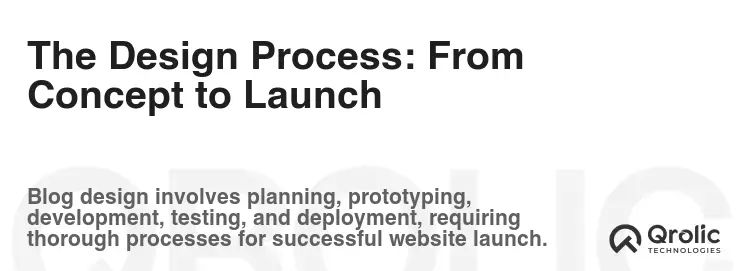
Designing a blog platform website requires a structured approach:
- Define Your Goals: What do you want to achieve with your blog? Who is your target audience? What is your brand identity?
- Research and Inspiration: Look at other blogs in your niche for inspiration. Identify design elements that you like and that resonate with your target audience.
- Create a Sitemap: Plan the structure of your website. Define the main pages and categories.
- Wireframing: Create basic mockups of your website’s layout. Focus on functionality and user flow.
- Design Mockups: Create visually appealing mockups of your website’s design. Experiment with different color palettes, fonts, and imagery.
- Development: Translate your design mockups into a functional website.
- Testing: Thoroughly test your website on different devices and browsers. Ensure all features are working correctly.
- Launch: Launch your website to the world!
- Maintenance and Updates: Regularly update your website’s software and plugins. Monitor your website’s performance and make improvements as needed.
SEO Optimization: Making Your Blog Discoverable
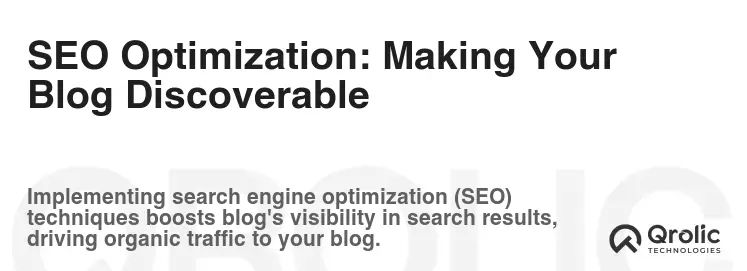
A beautiful website is useless if no one can find it. Search engine optimization (SEO) is crucial for driving traffic to your blog:
On-Page SEO
- Keyword Research: Identify the keywords that your target audience is searching for. Use keyword research tools like Google Keyword Planner, Ahrefs, or SEMrush.
- Keyword Optimization: Incorporate your target keywords into your website’s title tags, meta descriptions, headings, and body text.
- Content Optimization: Create high-quality, informative, and engaging content that satisfies user intent.
- Image Optimization: Optimize your images for the web by using descriptive file names and alt text.
- Internal Linking: Link to other relevant pages on your website to improve navigation and SEO.
- Mobile-Friendliness: Ensure your website is mobile-friendly. Google prioritizes mobile-friendly websites in its search rankings.
- Page Speed: Optimize your website’s loading speed. Google penalizes slow-loading websites.
Off-Page SEO
- Link Building: Build high-quality backlinks from other reputable websites.
- Social Media Marketing: Promote your blog on social media to drive traffic and increase brand awareness.
- Guest Blogging: Write guest posts for other blogs in your niche to reach a wider audience and build backlinks.
- Online Directory Listings: List your blog in relevant online directories.
Technical SEO
- XML Sitemap: Submit an XML sitemap to Google Search Console to help Google crawl and index your website.
- Robots.txt: Use a robots.txt file to control which pages Google crawls and indexes.
- Structured Data Markup: Implement structured data markup to provide Google with more information about your content.
- HTTPS: Ensure your website is secured with HTTPS.
Common Mistakes to Avoid in Blog Platform Website Design
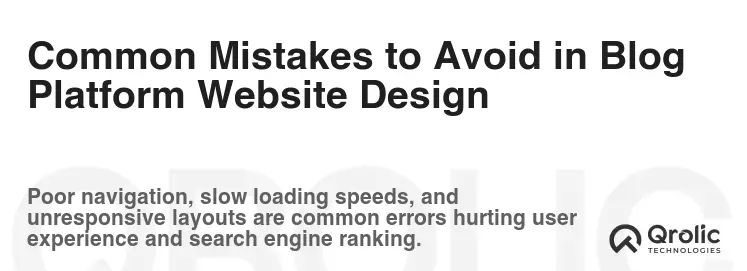
- Ignoring Mobile-Friendliness: In today’s mobile-first world, a non-responsive website is a recipe for disaster.
- Slow Loading Times: Users are impatient. If your website takes too long to load, they’ll leave.
- Poor Navigation: Make it easy for visitors to find what they’re looking for.
- Cluttered Design: Avoid cluttering your website with too many elements.
- Inconsistent Branding: Maintain a consistent brand identity across your website.
- Ignoring SEO: Don’t neglect search engine optimization.
- Neglecting Accessibility: Ensure your website is accessible to users with disabilities.
Examples of Inspiring Blog Platform Website Designs
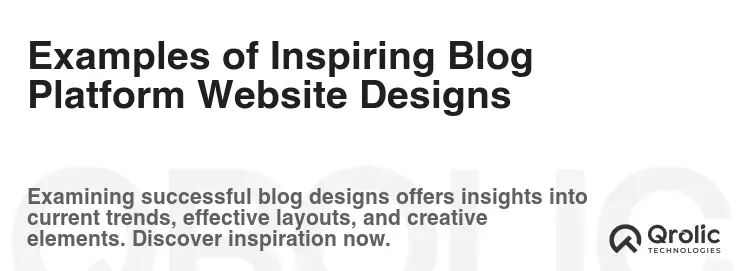
- Minimalist Blogs: Clean and simple designs that focus on content. Examples: Zen Habits, The Minimalists.
- Magazine-Style Blogs: Blogs that resemble online magazines with a focus on visual content. Examples: The Verge, Wired.
- Personal Blogs: Blogs that showcase the personality of the author. Examples: Wait But Why, Cup of Jo.
- Niche Blogs: Blogs that cater to a specific audience with a unique design. Examples: Brain Pickings, Smashing Magazine.
The Future of Blog Platform Website Design
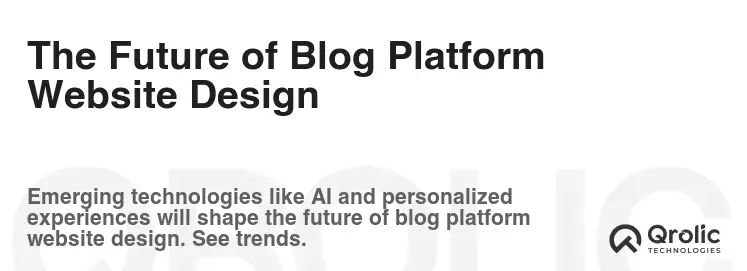
Blog platform website design is constantly evolving. Here are some trends to watch out for:
- AI-Powered Design: Artificial intelligence is being used to automate design tasks and personalize user experiences.
- Voice Search Optimization: Optimizing websites for voice search is becoming increasingly important.
- Virtual Reality (VR) and Augmented Reality (AR): VR and AR technologies are being used to create immersive and interactive blog experiences.
- Micro-Interactions: Small animations and interactions that enhance user engagement.
- Dark Mode: Dark mode is becoming increasingly popular as it reduces eye strain and saves battery life.
- Personalized Experiences: Tailoring the user experience based on individual preferences and behavior.
- Increased Focus on Accessibility: Accessibility is becoming a more important consideration in website design.
Monetizing Your Blog Through Design
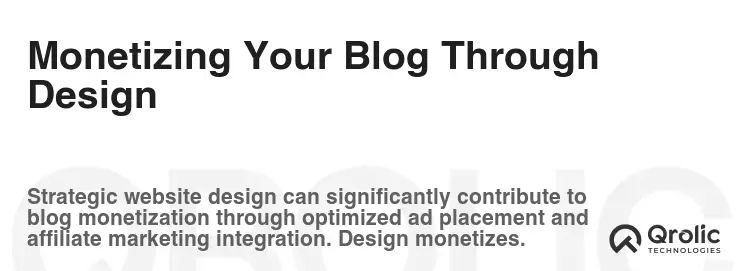
Your website design can directly impact your ability to monetize your blog. Here are some strategies:
- Strategic Ad Placement: Place ads in prominent locations on your website without being intrusive.
- Affiliate Marketing: Integrate affiliate links into your content and design to promote relevant products and services.
- Selling Digital Products: Design your website to showcase and sell your digital products, such as ebooks, courses, and templates.
- Offering Services: Use your website to promote your services, such as writing, consulting, or design.
- Membership Programs: Create a membership program and offer exclusive content and benefits to paying members.
- E-commerce Integration: Integrate an e-commerce platform into your blog to sell physical products.
Content Creator Web Development: Beyond the Blog
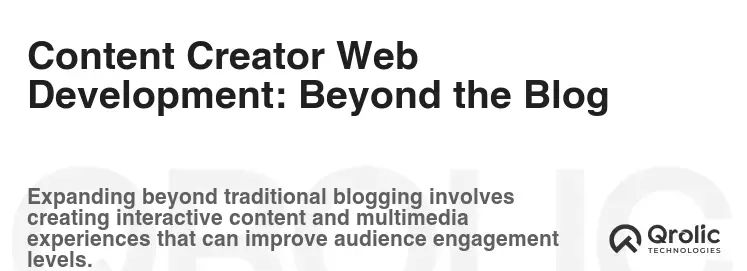
While focusing on the blog itself is crucial, many content creators require a broader web presence. This might include:
- Portfolio Websites: Showcasing your work with high-quality visuals and detailed descriptions.
- Landing Pages: Designed to convert visitors into leads or customers, focusing on a specific offer.
- Online Courses: Platforms for delivering and managing online courses, often integrated with video and interactive elements.
- Community Forums: Creating spaces for your audience to connect and interact, fostering a sense of belonging.
These elements require a holistic approach to content creator web development, ensuring a consistent brand experience and seamless integration with your blog.
Qrolic Technologies: Your Partner in Blog Platform Website Design

At Qrolic Technologies (https://qrolic.com/), we understand the importance of a well-designed blog platform. We offer a comprehensive range of services to help you create a website that not only looks great but also achieves your business goals.
Our Services Include:
- Custom Website Design: We create unique and visually appealing website designs that reflect your brand personality.
- Responsive Web Development: We ensure your website is mobile-friendly and adapts seamlessly to different devices.
- SEO Optimization: We optimize your website for search engines to drive traffic and increase visibility.
- Content Management Systems (CMS): We work with popular CMS platforms like WordPress to provide you with easy-to-use content management tools.
- E-commerce Integration: We integrate e-commerce platforms into your website to enable you to sell products and services online.
- Website Maintenance and Support: We provide ongoing website maintenance and support to ensure your website is always up-to-date and secure.
Why Choose Qrolic Technologies?
- Experienced Team: We have a team of experienced designers and developers who are passionate about creating high-quality websites.
- Client-Centric Approach: We work closely with our clients to understand their needs and goals.
- Affordable Prices: We offer competitive prices without compromising on quality.
- Excellent Customer Service: We provide excellent customer service and support.
- Proven Track Record: We have a proven track record of delivering successful website design projects.
We are committed to helping you create a blog platform that attracts readers, builds community, and achieves your goals. Contact us today to learn more about our services and how we can help you.
Conclusion: The Power of a Well-Designed Blog Platform
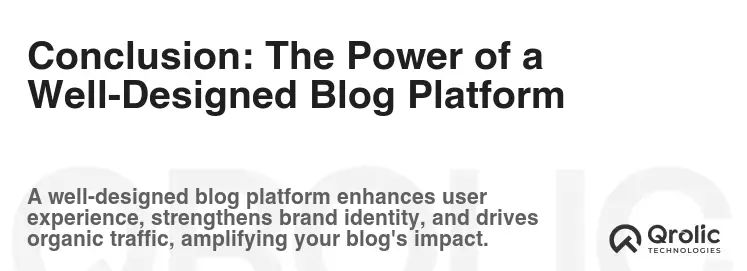
In conclusion, blog platform website design is much more than just aesthetics. It’s a strategic investment that can significantly impact your blog’s success. By focusing on visual appeal, user experience, functionality, and SEO optimization, you can create a website that attracts readers, builds a loyal audience, and achieves your business goals. Don’t underestimate the power of a well-designed blog platform – it’s the foundation for your online success as a content creator in the realm of online publishing website design. Invest wisely, and your blog will flourish.
